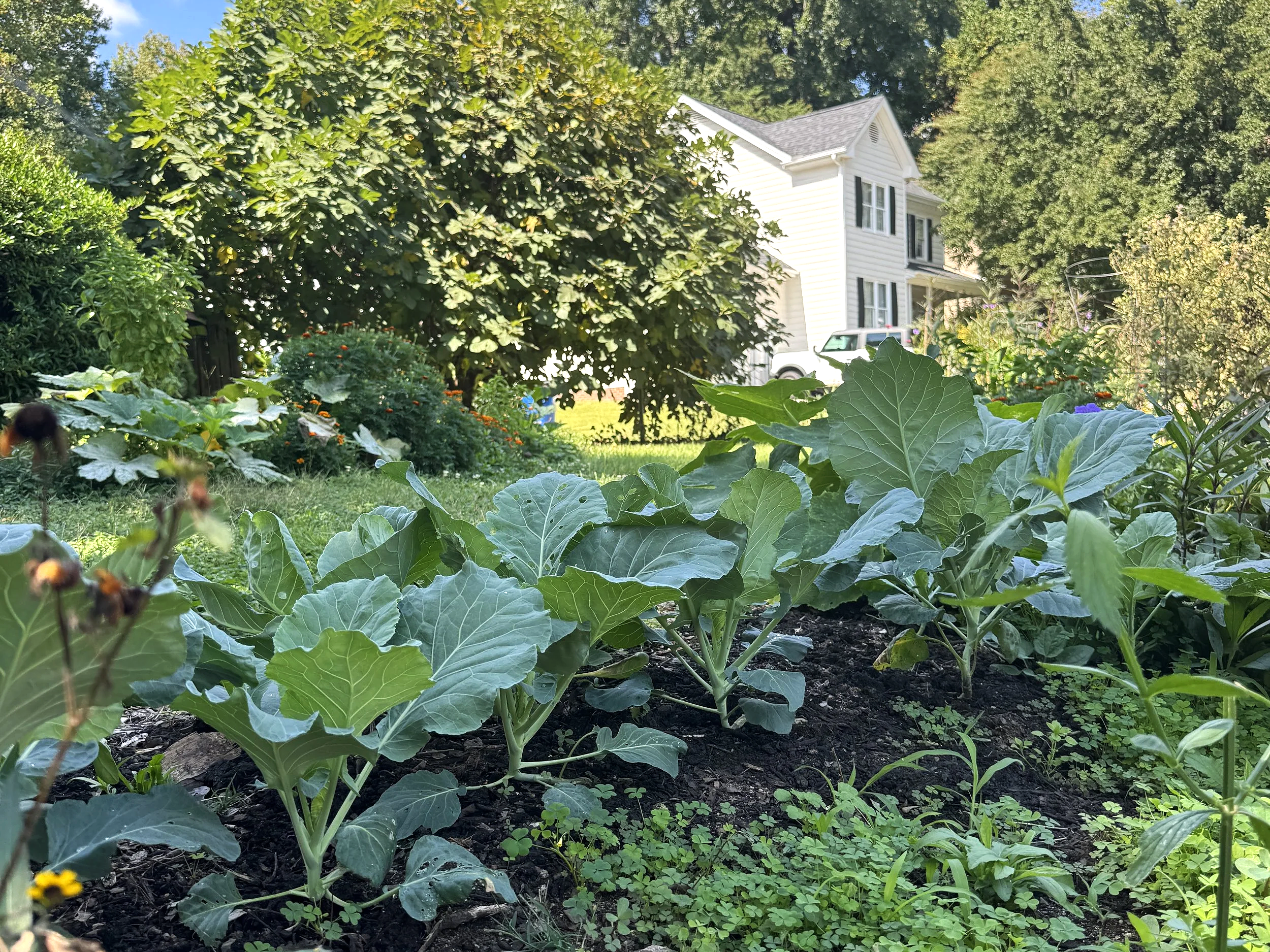My Carolina Homestead
Our Urban Homestead Journey: Building a Sustainable Life in the City
When most people think “homestead,” they imagine wide-open fields, barns, and endless rows of crops. But my family and I are living proof that you can build a sustainable, self-sufficient lifestyle right here in the suburbs of Raleigh — with just a little backyard and a big dream.
The most important rule of homesteading? Start where you are. You don’t need acres of land, a flock of animals, or a perfectly laid-out plan to begin. You can homestead in a single raised bed, a few containers on your balcony, or even by changing the way you approach food and waste in your home. Homesteading isn’t about perfection — it’s about progress, mindset, and connection.
Here’s what our journey has looked like so far:
1. Growing Our Own Food
We started with a 900 sq. ft. backyard garden — enough to grow fresh vegetables, fruit, and flowers year-round for our family and even sell extras at the farmers market. But you don’t have to have a lot of land to homestead. You can start exactly where you are, even if that means a few pots of herbs on your windowsill, a container of tomatoes on your porch, or a small raised bed tucked into the corner of your yard.
You’d be surprised at what you can grow with a little dirt, a little sun, some water, and the right attitude. The key is simply to start.
2. Reducing Waste
Homesteading goes far beyond the garden — it’s about creating systems that honor the earth and keep life sustainable. One of the most powerful principles we follow is closing the circuit, a permaculture concept that encourages us to keep as much of what we create on the property, on the property.
That means composting kitchen scraps instead of throwing them away, repurposing eggshells into garden nutrients, and using rainwater to hydrate our beds. Every loop we close keeps our homestead healthier, reduces dependence on outside inputs, and makes us more resilient.
3. Creating Community
One of the myths about homesteading is that it’s a solitary pursuit — just you and your land, “living off the grid.” The truth? Homesteading thrives in community. Being intentional about opening up your space, sharing your abundance, and connecting with fellow humans is a necessity.
Neighbors who swap produce, friends who lend tools, and a community that values sustainability make this life not only easier but more joyful. When we choose connection over isolation, everything runs more smoothly.
4. Teaching Our Kids
One of my greatest joys is raising my children on the land — watching them plant seeds, feed the chickens, and run barefoot through the garden. This is how children should be raised: close to the land and surrounded by love and light, while gaining deeply important life skills.
They’re learning where their food comes from, how to care for animals, and the value of patience, responsibility, and respect for nature. These lessons are far more valuable than anything in a textbook, and they’ll carry them for life.
Final Thoughts
Homesteading is so much bigger than gardening. It’s a lifestyle built on intention, resourcefulness, and connection. And the most important rule of all? Start where you are. You don’t even have to start with growing — you could begin with composting, reducing waste, learning to cook from scratch, or connecting with your community.
Homesteading isn’t about the size of your land. It’s about the size of your vision.
👉 Want to see how you can start your own homestead journey, right where you are? Sign up for my newsletter to get tips, DIY projects, and resources straight to your inbox.

